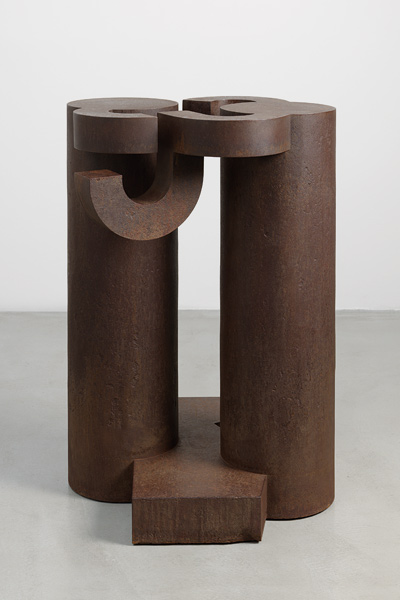Eduardo Chillida (1924–2002) is one of the greatest of modern sculptors yet curiously little known in this country. The last major show in London was at the Hayward Gallery in 1990, where I first encountered his work in real depth. Before that, he had only exhibited once in the UK, a solo show at the McRoberts & Tunnard Gallery in 1965. Pilar Ordovas is to be congratulated for putting on this small but very choice new show. It’s high time we saw more of Chillida’s work: its powerful sculptural presence combines a satisfying sense of geometry with a love of materials, investigates space and light in new ways and is as much to do with poetry as with construction.
Chillida was born in the coastal town of San Sebastián in the Basque Country, and studied architecture at the University of Madrid before gravitating towards sculpture in the late 1940s. Athletic in his youth, Chillida was goalkeeper for Real Sociedad, San Sebastián’s football club, but a serious knee injury put paid to that promising career. He moved to France and set up his first studio, before returning to San Sebastián to produce major abstract sculptures in iron, wood and stone. Octavio Paz wrote that in Chillida’s work ‘iron says wind, wood says song, alabaster says light — but all say the same thing: space’. The title of this exhibition indicates the predominant materials: on the ground floor are four substantial sculptures in corten steel, while downstairs are three alabaster carvings and a poignant group of ink and thread hangings, together with some delicate pencil drawings.
Most art is primarily about shape, and in abstract sculpture there is obviously a greater premium on the interplay of shapes than in art that has a narrative or descriptive content.








Comments
Join the debate for just £1 a month
Be part of the conversation with other Spectator readers by getting your first three months for £3.
UNLOCK ACCESS Just £1 a monthAlready a subscriber? Log in